Mark R Pope
age ~67
from Grayslake, IL
- Also known as:
-
- Mark K Pope
- Pope Mark
Mark Pope Phones & Addresses
- Grayslake, IL
- Penokee, KS
- Hill City, KS
- Abbott Park, IL
- Madison, WI
Medicine Doctors
Resumes

Warehouse Manager
view sourceWork:
Grocery Supply Company
Warehouse Manager
Warehouse Manager

Process Operator
view sourceIndustry:
Non-Profit Organization Management
Work:
Mosaic
Process Operator
Process Operator

Mark Pope
view source
Mark Pope
view sourceSkills:
Microsoft Office
Microsoft Excel
Microsoft Word
Powerpoint
Outlook
Windows
English
Html
Contract Negotiation
Photoshop
Research
Microsoft Excel
Microsoft Word
Powerpoint
Outlook
Windows
English
Html
Contract Negotiation
Photoshop
Research

Mark Pope
view source
President
view sourceWork:
Wayne County Development Alliance
President
President

Mark Pope
view source
Mark Pope
view sourceName / Title
Company / Classification
Phones & Addresses
General Manager
Boston Market Corporation
Fast-Food Rest Chain
Fast-Food Rest Chain
800 Devon Ave, Park Ridge, IL 60068
8472923000
8472923000
MB3 SERVICES, INC
GATEWAY RECORDING STUDIO, LLC
Us Patents
-
Apparatus And Method For The Collection Of Interstitial Fluids
view source -
US Patent:6468229, Oct 22, 2002
-
Filed:Jan 26, 2001
-
Appl. No.:09/529148
-
Inventors:John P. Grace - Lake Villa IL
Neil W. Loomis - Racine WI
Thomas G. Schapira - Bristol WI
Sie Ting Wong - Mundelein IL
Kristin M. Noonan - Chicago IL
Michael G. Lowery - Wildwood IL
Pete M. Bojan - Grayslake IL
Daniel P. Schmidt - Bannockburn IL
Tung-Ming Huang - Buffalo Grove IL
Robert G. Hiltibran - late of Libertyville IL
Mark R. Pope - Grayslake IL
John J. Kotlarik - Lake Geneva WI
Brian Joseph Tarkowski - Lake Villa IL
David Dean Cunningham - Lake Villa IL -
Assignee:Abbott Laboratories - Abbott Park IL
-
International Classification:A61B 500
-
US Classification:600573, 604317
-
Abstract:The present invention involves apparatus and methods for use in collecting bodily fluids, such as interstitial fluids, from the epidermal layer of an animal. A preferred apparatus includes a pressure head and, optionally, a holder therefor for supplying a positive pressure to the head. The methods include the application of a positive pressure to the area surrounding an epidermal site from which stratum corneum has been breached, such as by laser ablation, to cause bodily fluids, such as interstitial fluids, to exude from the site and collecting the fluids exuding therefrom.
-
Removal Of Stratum Corneum By Means Of Light
view source -
US Patent:6569157, May 27, 2003
-
Filed:May 18, 1998
-
Appl. No.:09/080432
-
Inventors:Eric B. Shain - Glencoe IL
Mark R. Pope - Grayslake IL
Joseph L. Pezzaniti - Round Lake IL -
Assignee:Abbott Laboratories - Abbott Park IL
-
International Classification:A61B 1820
-
US Classification:606 12, 606 9, 606 10, 606 13
-
Abstract:The invention involves a method for focusing light comprising the steps of: projecting at least one pulse of light onto the surface of the skin of a patient; collecting at least a portion of the light that is reflected from the skin of the patient; projecting the collected, reflected light onto a detector; and adjusting the projection of the pulsed light onto the surface of the skin of the patient in such a manner that the signal projected onto the detector is optimized. When the light pulse is properly focused, e. g. , when it is characterized by the best focus, it can be used to provide energy to form an opening in the skin of the patient. When more than one pulse of light is required to form an opening in the skin of the patient, aligning the light prior to each pulse will improve the efficiency of formation of the opening. In general, the method for aligning and focussing is the same as the method for focusing, with the difference being that aligning further includes steps for moving the spot of light formed by the light so that it strikes the surface of the skin at or near the position on the surface of the skin of the patient at which the previous spot of light struck the skin.
-
Fluid Collection And Monitoring Device
view source -
US Patent:6679841, Jan 20, 2004
-
Filed:Jun 15, 2001
-
Appl. No.:09/880948
-
Inventors:Peter M. Bojan - Grayslake IL
Timothy P. Henning - Vernon Hills IL
Neil W. Loomis - Racine WI
Mark R. Pope - Grayslake IL
Jonathan A. Eppstein - Atlanta GA -
Assignee:Abbott Laboratories - Abbott Park IL
-
International Classification:A61B 500
-
US Classification:600309, 600310, 600345, 600584
-
Abstract:An article capable of both collecting interstitial fluid and detecting an analyte in that fluid and a method for use of that article. Preferably, the article is also capable of measuring the amount of analyte in the interstitial fluid. The article can be used in conjunction with a meter that contains an appropriate detection element for determining the amount of analyte in the interstitial fluid. In one preferred embodiment, the article is a multiple-layer element comprising: (1) a layer that is capable of being placed in contact with the skin of a patient; (2) a layer that is coated over the skin-contacting layer; (3) a layer, substantially coplanar with the overcoat layer, that is capable of transporting interstitial fluid by means of chemically aided wicking; (4) a layer, overlying the interstitial fluid transporting layer, that is capable of being placed in contact with a meter, said layer having an opening therein through which light can be transmitted; (5) a layer, disposed on the surface of the meter-contacting layer that faces the skin-contyacting layer, that is capable of detecting the presence of analyte or measuring the amount of analyte in the fluid. In order to use the multiple-layer element, light from a source of light is transmitted through the opening in the multiple-layer material to be absorbed at a light-absorbing target on the skin-contacting layer. This light transfers energy to the target, and this transferred energy causes an opening to form in the skin-contacting layer and an opening to form in the stratum corneum.
-
Apparatus And Method For The Collection Of Interstitial Fluids
view source -
US Patent:6786874, Sep 7, 2004
-
Filed:Sep 13, 2002
-
Appl. No.:10/243584
-
Inventors:John P. Grace - Lake Villa IL
Neil W. Loomis - Racine WI
Thomas G. Schapira - Bristol WI
Sie Ting Wong - Mundelein IL
Kristin M. Noonan - Chicago IL
Michael G. Lowery - Wildwood IL
Pete M. Bojan - Grayslake IL
Daniel P. Schmidt - Bannockburn IL
Tung-Ming Huang - Buffalo Grove IL
Robert G. Hiltibran - late of Libertyville IL
Mark R. Pope - Grayslake IL
John J. Kotlarik - Lake Geneva WI
Brian Joseph Tarkowski - Lake Villa IL
David Dean Cunningham - Lake Villa IL -
Assignee:Abbott Laboratories - Abbott Park IL
-
International Classification:A61B 1000
-
US Classification:600573
-
Abstract:The present invention involves apparatus and methods for use in collecting bodily fluids, such as interstitial fluids, from the epidermal layer of an animal. A preferred apparatus includes a pressure head and, optionally, a holder therefor for supplying a positive pressure to the head. The methods include the application of a positive pressure to the area surrounding an epidermal site from which stratum corneum has been breached, such as by laser ablation, to cause bodily fluids, such as interstitial fluids, to exude from the site and collecting the fluids exuding therefrom.
-
Method For Renaturing Proteins In The Presence Of Alkyl Sulfate Detergents
view source -
US Patent:51360276, Aug 4, 1992
-
Filed:May 2, 1989
-
Appl. No.:7/346508
-
Inventors:Mark R. Pope - Wildwood IL
-
Assignee:Abbott Laboratories - Abbott Park IL
-
International Classification:C07K 312
-
US Classification:530427
-
Abstract:A high concentration of renaturing surfactants is added to protein systems in the presence of alkyl sulfate detergents to displace the detergent with respect to the interaction with the protein, thereby renaturing the protein and restoring its reactivity. The presence of higher quantities of detergent in the system results in smaller protein aggregates, and thus a higher reactivity and specificity as measured for the system in its entirety.
-
Removal Of Stratum Corneum By Means Of Light
view source -
US Patent:62450603, Jun 12, 2001
-
Filed:Dec 27, 1999
-
Appl. No.:9/472695
-
Inventors:Neil W. Loomis - Racine WI
Peter M. Bojan - Grayslake IL
Timothy P. Henning - Vernon Hills IL
Mark R. Pope - Grayslake IL
Andrew J. Muetterties - Mundelein IL -
Assignee:Abbott Laboratories - Abbott Park IL
-
International Classification:A61B 1818
-
US Classification:606 9
-
Abstract:A method for increasing the permeability of the stratum corneum by means of a source of light, preferably a laser, more preferably a pulsed laser. By increasing the permeability of the stratum corneum, access to the interstitial fluid is achieved, thereby enabling measurement of analytes in the interstitial fluid. In one aspect, the method comprises the steps of: (a) providing a source of light having a wavelength of from about 930 nm to about 1040 nm; and (b) exposing a region of the stratum corneum of the patient to said source of light for a period of time sufficient to form an opening in the stratum corneum. Preferably, exposure of the region of the stratum corneum to the source of light is ceased when an amount of interstitial fluid fills the opening in the stratum corneum, which amount is sufficient to cause the scatter intensity of the light reflected from the surface of the interstitial fluid occupying the opening in the stratum corneum to differ from the scatter intensity of the light reflected from a region of the stratum corneum that is substantially free of interstitial fluid. The invention also involves an apparatus for carrying out the foregoing method.
-
Reagents And Methods For The Determination Of Glycohydrolytic Enzymes
view source -
US Patent:52722600, Dec 21, 1993
-
Filed:Jan 29, 1992
-
Appl. No.:7/827669
-
Inventors:Mark R. Pope - Wildwood IL
Christopher Bieniarz - Highland Park IL -
Assignee:Abbott Laboratories - Abbott Park IL
-
International Classification:C07H 1524
C12Q 100 -
US Classification:536 181
-
Abstract:Novel pyrene-trisulfonate derivatives and the use thereof in a method for the determination of glycohydrolytic enzyme activity are provided. The method comprises the steps of (a) forming a test solution comprising a test sample containing the glycohydrolytic enzyme and a pyrene-trisulfonate derivative of the present invention, wherein the derivative is hydrolyzed by the glycohydrolytic enzyme to result in the formation of free 8-hydroxy-1,3,6-pyrene trisulfonate as a function of, and which can be correlated to, the amount of the glycohydrolytic enzyme present in the test sample, and (b) measuring and correlating either the intensity of fluorescence, or the optical density, of the test solution to the presence or amount of the glycohydrolytic enzyme in the test sample. A preferred pyrene-trisulfonate derivative is pyrene-1,3,6-trisulfonic acid) 8-. beta. -D-glucuronide for the determination of. beta.
-
Covalent Attachment Of Specific Binding Members To A Solid Phase With Two Bifunctional Reagents And A Dithio Compound
view source -
US Patent:53995015, Mar 21, 1995
-
Filed:Mar 16, 1992
-
Appl. No.:7/852837
-
Inventors:Mark R. Pope - Wildwood IL
Kevin M. Knigge - Gurnee IL -
Assignee:Abbott Laboratories - Abbott Park IL
-
International Classification:G01N 33549
G01N 33543
C12N 1106
C12N 1100 -
US Classification:436532
-
Abstract:A specific binding member such as an antigen or antibody is immobilized by covalent attachment to a solid phase such as a latex microparticle. The solid phase is reacted with a heterobifunctional or homobifunctional coupling agent to form a complex that is then reacted with a dithiol compound to form a thiolated solid phase. A specific binding member is reacted with the coupling agent to form a complex which is then reacted with the thiolated solid phase to link the specific binding member to the solid phase through thioethers. Alternatively, the dithiol compound may be reacted with the specific binding member/coupling agent complex to form a thiolated complex that is reacted with the solid phase/coupling agent complex. The coupling agent may contain a spacer. In another embodiment, the solid phase is reacted with a disulfide compound to form a complex and the complex is reacted with a reductant to form a thiolated solid phase which is reacted with a specific binding member/coupling agent complex.
License Records
Mark Pope
License #:
E063146 - Active
Category:
Emergency medical services
Issued Date:
Apr 13, 1995
Expiration Date:
Apr 30, 2017
Type:
CHP-West Sacramento
Mark Anthony Pope
License #:
52716 - Expired
Category:
Nursing Support
Issued Date:
Aug 26, 2004
Effective Date:
Sep 5, 2007
Expiration Date:
Aug 26, 2007
Type:
Medication Aide
Googleplus
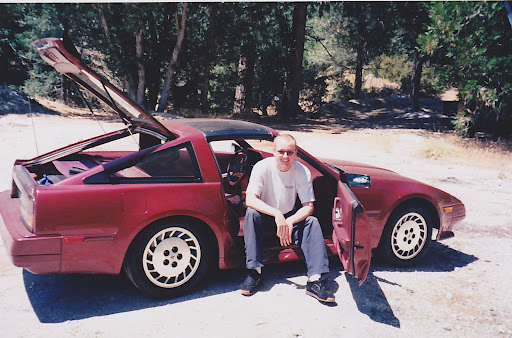
Mark Pope
Work:
Heavy Iron Studios, Inc. - Studio Technical Director

Mark Pope
Work:
Oracle Corporation

Mark Pope

Mark Pope

Mark Pope

Mark Pope
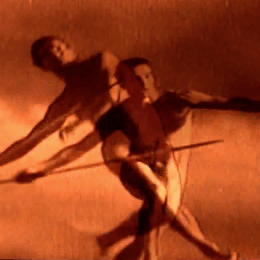
Mark Pope

Mark Pope
Youtube
Classmates

Mark Pope
view sourceSchools:
Powder Springs Elementary School Powder Springs GA 1963-1975
Community:
Marla Rocha, Melanie O'byrne, Myra Baucum, Lance Muhammad

Mark Pope
view sourceSchools:
Newman Elementary School Salt Lake City UT 1971-1974, Taylor School Eielson Afb AK 1974-1976, Eielson High School Eielson Afb AK 1976-1977
Community:
Samuel Woolf, Owen Duncan, Stephen Daniels

Mark Pope
view sourceSchools:
Haworth High School Kokomo IN 1978-1982

Mark Pope (Mark Pope)
view sourceSchools:
Ridgeland High School Rossville GA 1988-1992

Mark Pope
view sourceSchools:
Clarksville High School Clarksville IN 1968-1972
Community:
Steve Ainsworth, Joyce Brummett, Steve Brown

Mark Pope (Matthews)
view sourceSchools:
Southern California Military Academy Long Beach CA 1976-1985
Community:
Kathy Apperson, Johnny Cattaneo

Mark Pope
view sourceSchools:
Highland High School Bakersfield CA 1985-1989
Community:
Suzan Wilson, Sheryl Graab

Mark Pope
view sourceSchools:
San Marcos Baptist Academy San Marcos TX 1970-1974
Community:
Gillian Laura, Homa Hill, Charlene Mcclelland
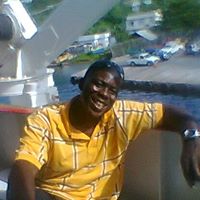
Mark Pope
view source
Mark Pope Sr.
view source
Mark Cheryl Pope
view source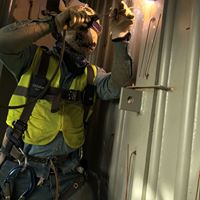
Mark Nakosi Pope
view source
Mark Pope
view source
Mark E Pope
view source
Mark Pope
view source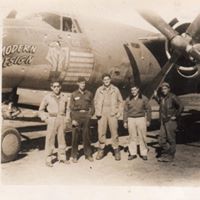
Mark Pope
view sourceFlickr
Plaxo

Mark Pope
view sourcePlano, TXSenior Solution Architect at HP I work for HP as a Solution Architect.

Mark Pope
view sourceClearwater, FLA

Mark Pope
view sourceFiremission NZ

mark pope
view sourceStratascale
Get Report for Mark R Pope from Grayslake, IL, age ~67













